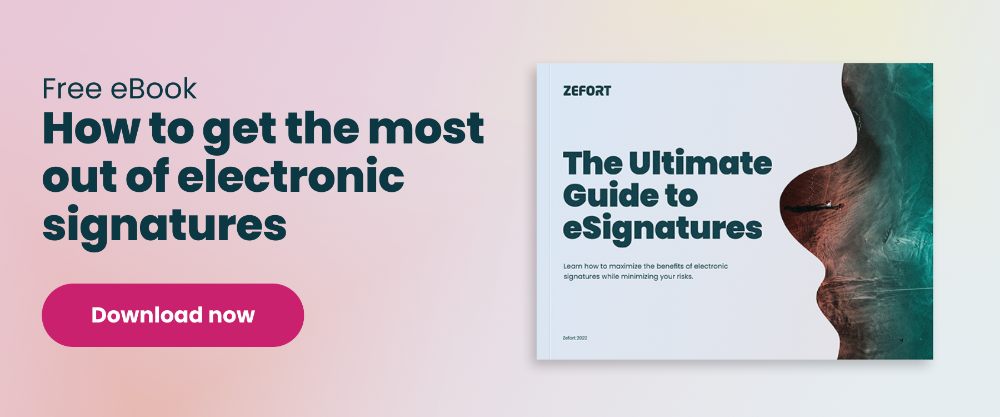Electronic signatures – What You Need to Know
Digital signing with electronic signatures was one of the trends boosted by the pandemic. During Covid, working from home and organizing remote meetings became business as usual for companies and individuals. Now, even though the pandemic is phasing out, many of the best practices for remote work will remain – including digital signing.
Today, scheduling face-to-face meetings just to put ink on a dotted line seems redundant as you can easily do the task online, regardless of time or place. Originally driven by the B2C industries, digital signing has quickly become widespread in the B2B business, too.
What are eSignatures?
Electronic signature, eSignature, digital signature – all these essentially mean the same thing, a personal confirmation on a digital document that the signee approves and agrees with the terms of a document.
Electronic signatures come in many forms: as an example of a fairly lightweight process, you can use a special pen to jot down your name on a touchscreen-enabled device or simply reply to an email stating your consent.
In the higher end, you could utilize a dedicated eSigning service to send signing requests and require the signee to verify her identity with a bank login or a physical identification card, for example.
What kind of companies use electronic signatures?
Digital signatures are probably one of the easiest ways to get started with digital workflows. They’re not just for corporations and big businesses – quite the opposite, the benefits can be even bigger for small businesses.
Consider the time and effort (and remember, time often equals money) you spend in setting up a meeting or sending out paper copies in an envelope. Wouldn’t it be much easier just to send out a signing request from your laptop and have your customer sign it right away?
In addition to saving resources, you end up removing complexity from your work and cutting clutter in your office. Having the master copy of your signed contract in a digital form means goodbye to paper and physical filing cabinets, for example.
Also, from an environmental point of view, electronic signatures come with a smaller overall environmental footprint compared to paper and ink.
What do I need to do?
Here’s the good news: getting started with eSignatures is easy and does not require technical know-how. There are many excellent, affordable eSigning services available that let you upload your document and send off signing requests in a matter of minutes.
There are a few questions you should consider before you start, however. Are eSignatures legally binding in your target market? What happens to your documents after they have been signed? And, most importantly, how can you get the most benefits for your business from electronic signing?
To learn more about these topics, we recommend reading our free eBook The Ultimate Guide to eSignatures. It’s a good resource to get started on the basics but also touches on topics like optimizing your CLM process and understanding the essentials of EU eIDAS regulation that makes eSignatures legally binding.





